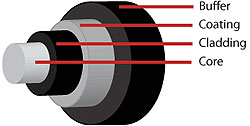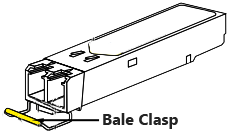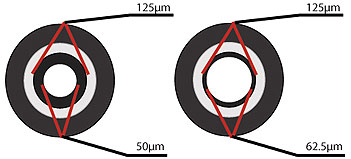What Is The Difference Between a Singlemode SFP and Multi-mode SFP?
What Is The Difference Between a Singlemode SFP and Multi-mode SFP?
 The single mode SFP and multimode SFP mean the SFP transceivers will work on different types of optical fibres; as in a Single mode SFP will work with Single mode fibre only, and a Multi-mode SFP will work with Multi-mode fibre only.
The single mode SFP and multimode SFP mean the SFP transceivers will work on different types of optical fibres; as in a Single mode SFP will work with Single mode fibre only, and a Multi-mode SFP will work with Multi-mode fibre only.
So, what’s the different between them? And what should we notice when using them?
Singlemode SFP
Singlemode fibre (SMF) has much tighter tolerances for optics used. The core is smaller and the laser wavelength is narrower. This means that SMF has the capability to carry a higher bandwidth at much longer transmission distances. Singlemode SFPs work mainly in the 1310nm and 1550nm wavelengths and is mostly used in a long distances transmission environment reaching 2km, 10km, 40km, 60km, 80km and 120km.
SINGLEMODE SFP COLOR CODING

SFPs are identified by the color of the Bale Clasp. Though there is still a lack of total conformity; generally speaking, Singlemode SFPs use this colour coding:
- Grey color coded bale clasp designates the 1470 nm SFP
- Violet color coded bale clasp designates the 1490 nm SFP
- Blue color coded bale clasp designates the 1510 nm SFP
- Green color coded bale clasp designates the 1530 nm SFP
- Yellow color coded bale clasp designates the 1550 nm SFP
- Orange color coded bale clasp designates the 1570 nm SFP
- Red color coded bale clasp designates the 1590 nm laser SFP
- Brown color coded bale clasp designates the 1610 nm SFP
- The color of the OS2 fiber optic patch cord is yellow
Multi-mode SFP
 Multi-mode Fiber
Multi-mode FiberMulti-mode fiber uses a much bigger core and usually uses a longer wavelength of light. Because of this, the optics used in Multi-mode have a higher capability to gather light from the laser. In practical terms, this means the optics are cheaper. The common Multi-mode SFPs work in 850nm wavelength and is only used for short distance transmission reaching 100m and 500m. Though it’s not able to transport for long distance, it can transport many kinds of optical signals.
MULTI-MODE SFP COLOR CODING
As with Singlemode SFPs, Multi-Mode SFPs are identified by the color of the Bale Clasp:
- Black color coded bale clasp designates a Multi-mode SFP
- The color of the fibre optic patch cord for Multi-mode OM4 is Aqua
Tips
- Ensure that the SFPs in both ends of the fibre patch cable are of the same wavelength and consistent in color coding
- Avoid extreme bends or wind fibre optic cables as this will increase the attenuation of transmitted light
- If no SFP/SFP+ is in use in your host equipment, cover the empty port with a blank to protect the optical port
- In case you’re wondering what SFP means: Small Form-factor Pluggable ( Yes it should be SFFP)
- The terminology behind fibre optics can be tricky. Let Switch SFP help you please call on 01285 700 750

